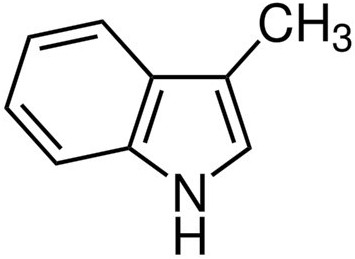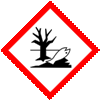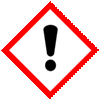Sakatole 3-methylindole Skatole Manufacturers, with SDS MSDS Sheet |
Supplier, Manufacturer, Exporter of Sakatole 3-methylindole Skatole Manufacturers, Muby Chemicals of Mubychem Group, established in 1976, is the original manufacturers of Specialty Chemicals, Pharmaceutical Excipient, Fragrance Food & Flavor chemicals, Reagent Grade Chemicals, Shale Gas Fracturing Chemicals in India. Mubychem Group has several manufacturing facilities spread across Western India and world wide contacts and toll manufacturers. We are exporting globally to countries like USA, Canada, Europe, UAE, South Africa, Tanzania, Kenya, Egypt, Nigeria, Cameroon, Uganda, Turkey, Mexico, Brazil, Chile, Argentina, Dubai, Korea, Vietnam, Thailand, Malaysia, Indonesia, Australia, China, Germany, France, Italy Portugal, Bangladesh, etc. The products are offered as per required specifications and in correct shape and size in mm or meshs or microns as specified by the buyer. The participating units have one or more accreditations like FDA - cGMP and GLP approval, ISO-9001 Certified, "REACH" Registered, ISO-14001, ISO/IEC 17025, ISO-22000, FSSC 22000, ISO 45001, Kosher Certified, Halal Certified, HACCP, FSSAI. We offer Commercial Pure & IP BP EP Ph Eur USP NF JP FCC Food Grade Analytical Reagent Grades of Chemicals |
| Bookmark this Web Site -- or -- Email This Page Info to a Colleague or Yourself |
Search our website here:







Skatole CAS Number 83-34-1, Molecular Weight 131.18, Chemical Formula C9-H9-N, EC Code EINECS 201-471-7, FEMA 3019
How big is your requirement or how small
We serve it all.
Specifications, Safety Data Sheet, Manufacturing process details, Wholesale retail buy sell prices, Uses etc available on line in these pages for Skatole.
Spanish Fabricantes de sakatol 3-metilindol
Portuguese Sakatol 3-metilindole fabricantes
Skatole
3-methylindole Technical & Pure Suppliers

Skatole or 3-methylindole is a mildly toxic white crystalline organic compound belonging to the indole family. Sakatole is also described as a white, crystalline, water soluble solid, C 9 H 9 N, having a strong, fecal odor: used chiefly as a fixative in the manufacture of perfume. It occurs naturally in feces and coal tar, and has a strong fecal odor. In low concentrations it has a flowery smell and is found in several flowers and essential oils, including those of orange blossoms, jasmine, and Ziziphus mauritiana. It is used as a fragrance and fixative in many perfumes and as an aroma compound. Its name is derived from the Greek root skato- meaning "dung".
It is one of many compounds that are attractive to males of various species of orchid bees, who apparently gather the chemical to synthesize pheromones; it is commonly used as bait to attract and collect these bees for study. 3-Methylindole has been shown to be an attractant to gravid mosquitoes in both field and laboratory conditions.
Specifications of Skatole, Sakatole or 3-methylindole:
Purity: 99.9 %
Moisture: 0.17 %
Melting Point: 96C
Appearance: Snow White Crystalline Powder
Solubility: 1gm of the product is soluble in 3ml of 95% Alcohol
Packing is 1 kg, 5 kg, 10 kg or 25 kg HDPE drums with aroma-retaining sealed liners inside as per customer requirement.
SKATOLE SDS GHS, SAFETY DATA SHEET
MSDS SHEET, MATERIAL SAFETY DATA SHEET 16-Nov-20
Section 1: Chemical Product and Identification
Product Name & Other Names: 3-Methylindole or Skatole or 3-methyl-1H-indole.
Synonyms: Skatole, Scatole, Skatol, 3-METHYLINDOLE, 3-Methyl-1H-indole, beta-Methylindole, Indole, 3-methyl-, 1H-Indole, 3-methyl-, 3 Methylindole, 3-methylindoline, methyl-3-indole, .beta.-Methylindole, 3-Methyl-4,5-benzopyrrole 3-MI.
CAS#: 83-34-1
EINECS EC Number: 201-471-7
FEMA Number.: 3019
Molecular Weight: 131.17
Chemical Formula: C9-H9-N
Relevant uses and uses advised against (if any): Industrial Manufacturing.
Suppliers: As per letterhead.
Section 2: Hazards Identification
GHS, Globally Harmonized System Classification in accordance with 29 CFR 1910
Classification according to Regulation (EC) No 1272/2008
Skin corrosion/irritation Category 3, H315
Serious eye damage/eye irritation Category 2A, H319
Specific target organ toxicity, single exposure; Respiratory tract irritation Category 3, H335
Hazardous to the aquatic environment, long-term hazard Category 2, H411
Labeling according GHS & Regulation (EC) No 1272/2008
GHS Label Elements  Aquatic Toxicity | GHS Label Elements  Irritant |
Signal Words: Warning
Hazard Statements:
H315: Causes skin irritation.
H319: Causes serious eye irritation.
H335: May cause respiratory irritation.
H411: Toxic to aquatic life with long lasting effects.
Precautionary Statements:
P264: Wash … thoroughly after handling.
P273: Avoid release to the environment.
P280: Wear protective gloves/protective clothing/eye protection/face protection.
P302+352: IF ON SKIN: Wash with soap and water.
P332+313: If skin irritation occurs: Get medical advice/attention.
P305+351+338: IF IN EYES: Rinse cautiously with water for several minutes. Remove contact lenses if present and easy to do – continue rinsing.
P337+313: If eye irritation persists get medical advice/attention.
P362: Take off contaminated clothing and wash before reuse.
P391: Collect spillage.
P501: Dispose of contents/container in accordance with local/national regulation.
Classification according to EU Directives 67/548/EEC or 1999/45/EC:
Hazard Symbols:
Xi = Irritant
N = Dangerous for the environment
Risk Phrases:
R36/37/38 = Irritating to eyes, respiratory system and skin.
R51/53 = Toxic to aquatic organisms, may cause long-term adverse effects in the aquatic environment.
Section 3: Composition and Information on Ingredients
Product Name & Other Names: 3-Methylindole or Skatole or 3-methyl-1H-indole.
CAS Number: 83-34-1
EINECS EC Number: 201-471-7
Section 4: First Aid Measures
Eye Contact: Check for and remove any contact lenses. Immediately flush eyes with running water for at least 15 minutes, keeping eyelids open. Cold water may be used. Do not use an eye ointment. Seek medical attention.
Skin Contact: After contact with skin, wash immediately with plenty of water. Gently and thoroughly wash the contaminated skin with running water and non-abrasive soap. Be particularly careful to clean folds, crevices, creases, and groin. Cover the irritated skin with an emollient. If irritation persists, seek medical attention. Wash contaminated clothing before reusing.
Serious Skin Contact: Wash with a disinfectant soap and cover the contaminated skin with an anti-bacterial cream. Seek medical attention.
Inhalation: Allow the victim to rest in a well-ventilated area. Seek immediate medical attention.
Serious Inhalation: Not available.
Ingestion: Do not induce vomiting. Loosen tight clothing such as a collar, tie, belt, or waistband. If the victim is not breathing, perform mouth-to-mouth resuscitation. Seek immediate medical attention.
Section 5: Fire and Explosion Data
Flammability of the Product: May be combustible at high temperature.
Products of Combustion: These products are carbon oxides (CO, CO2), along with some NOx.
Fire Hazards in Presence of Various Substances: Not available.
Fire Fighting Media and Instructions:
SMALL FIRE: Use DRY chemical powder.
LARGE FIRE: Use water spray, fog or foam. Avoid water jet.
Special Information: In the event of a fire, wear full protective clothing and NIOSH-approved self-contained breathing apparatus with full face piece operated in the pressure demand or other positive pressure mode. At high temperatures under fire conditions, it may produce toxic or irritating fumes. Fire-extinguishing work is done from the windward and the suitable fire-extinguishing method according to the surrounding situation is used. Uninvolved persons should evacuate to a safe place.
Section 6: Accidental Release Measures
Personal precautions, protective equipment, and emergency procedures: Avoid breathing dust/fumes/gas/mist/vapors/spray. Use individual protective equipment (waterproof boots, suitable protective clothing, safety glasses, etc.). Restrict unprotected personnel from the area. Prevent any contact with hot surfaces. Do not approach facing the wind. Do not touch the spilled material.
Environmental precautions: Do not let the product enter drains, soil, or water sources.
Methods and materials used for containment Cleanup procedures and Storage:
Small Spill: Use appropriate tools to put the spilled solid in a convenient waste disposal container. Finish cleaning by spreading water on the contaminated surface and dispose of according to local and regional authority requirements.
Large Spill: Do not inhale vapors, mist, or gas. Avoid dust formation. Contain spilled material. Cover with an inert, non-combustible absorbent material, (e.g. sand, earth, diatomaceous earth, vermiculite). Use a shovel to put the material into a convenient waste disposal container. Finish cleaning by spreading water on the contaminated surface and allow to evacuate as per law.
Section 7: Handling and Storage
Precautions for safe handling: Apply according to good manufacturing and industrial hygiene practices. Ensure proper ventilation.In case of insufficient ventilation, wear suitable respiratory equipment. Wash thoroughly after handling. Do not drink, eat, or smoke while handling. Avoid contact with skin, eyes, and clothing. Minimize dust generation. Avoid breathing dust/fumes/gas/mist/vapors/spray. Avoid contact with eyes, skin, and clothing. Keep container tightly closed. Avoid ingestion and inhalation. Use individual protective equipment (waterproof boots, suitable protective clothing, safety glasses, etc.). Prevent any contact with hot surfaces.
Conditions for safe storage, including any incompatibilities: Store in cool, dry, and ventilated area away from heat sources and protected from sunlight in tightly closed original container. Keep air contact to a minimum. Store protected from heat, sparks and ignition sources and incompatible materials. Avoid contact with skin and eyes. Avoid inhalation of dust/mist/vapor. Do not store with incompatible materials like strong oxidizing agents and acids. Ground all equipment containing material. Do not ingest.
Section 8: Exposure Controls/Personal Protection
Contains no substances with occupational exposure limit values.
Engineering Controls: Use process enclosures, local exhaust ventilation, or other engineering controls to keep airborne levels below recommended exposure limits. If user operations generate dust, fume, or mist, use ventilation to keep exposure to airborne contaminants below the exposure limit.
Ventilation System: A system of local and/or general exhaust is recommended to keep employee exposures as low as possible. Local exhaust ventilation is generally preferred because it can control the emissions of the contaminant at its source, preventing dispersion of it into the general work area.
Personal Respirators (NIOSH Approved): For conditions of use where exposure to dust or mist is apparent and engineering controls are not feasible, a particulate respirator may be worn. For emergencies or instances where the exposure levels are not known, use a full-face positive-pressure, air-supplied respirator.
Skin Protection: Wear protective gloves and clean body-covering clothing.
Eye Protection: Use chemical safety goggles and/or full face shield where dusting or splashing of solutions is possible. Maintain eye wash fountain and quick-drench facilities in work area.
Other Control Measures: Maintain good housekeeping in work area. Dust deposits on floors and other surfaces may pick up moisture and cause the surfaces to become slippery and present safety hazards. Handle in accordance with good industrial hygiene and safety practice. Wash hands after handling.
Section 9: Physical and Chemical Properties
Physical state and appearance: Whit to off-white solid. (Crystalline solid, flakes or powder).
Odor: Unpleasant.
Odor threshold: Not available.
pH: Not available.
Relative density: Not available.
Boiling Point: 265.5C (509.9F)
Melting Point: 95.5C (203.9F)
Flash point: Not available.
Auto-ignition temperature: Not available.
Decomposition temperature: Not available.
Upper/lower flammability or explosive limits: Not available.
Vapor pressure: Not available.
Vapor density: Not available.
Evaporation rate: Not available.
Flammability (solid, gas): Not available.
Partition coefficient: n-octanol/water: Not available.
Solubility(ies): Solubility: Partially soluble in hot water, methanol, diethyl ether, n-octanol, acetone. Very slightly soluble in cold water.
Dispersion Properties: Partially dispersed in hot water, n-octanol. Very slightly dispersed in cold water, methanol, and diethyl ether. See solubility in methanol, diethyl ether, n-octanol, and acetone.
Viscosity: Not available.
Molecular Weight: 131.17
Chemical Formula: C9-H9-N
Section 10: Stability and Reactivity Data
Stability: Stable.
Incompatibility with various substances: Reactive with oxidizing agents, acids.
Corrosivity: Not available.
Polymerization: No.
Section 11: Toxicological Information
Toxicity to Animals: Acute oral toxicity (LD50): 3450 mg/kg [Rat].
Carcinogenicity: No component of this product present at levels greater than or equal to 0.1% is identified as possible or confirmed human carcinogen by IARC, ACGIH, OSHA and NTP.
Mutagenic Effects: Not available.
Teratogenic Effects: Not available.
Developmental Toxicity: Not available.
Section 12: Ecological Information
Toxicity to fish: LC50 - Pimephales promelas (fathead minnow) - 8,84 mg/l - 96 h
Persistence and Degradability: No information available.
Mobility: No information available.
Bioaccumulation/ Accumulation: No information available.
Results of PBT and vPvB assessment: No data available for assessment.
Section 13: Disposal Considerations
Waste Disposal: To be done as per local laws.
Section 14: Transport Information
DOT USA, TDG Canada & ADR/RID Europe
UN number: 3335 Class: 9 Packing group: III
Proper shipping name: ENVIRONMENTALLY HAZARDOUS SUBSTANCE, SOLID, N.O.S. (3-Methylindole)
IMDG/IMO
UN number: 3335 Class: 9 Packing group: III
Proper shipping name: ENVIRONMENTALLY HAZARDOUS SUBSTANCE, SOLID, N.O.S. (3-Methylindole)
IATA
UN number: 3335 Class: 9 Packing group: III
Proper shipping name: Aviation regulated solid, n.o.s. (3-Methylindole)
Section 15: Other Regulatory Information
US Federal and State Regulations:
SARA 302: No chemicals in this material are subject to the reporting requirements of SARA Title III, Section 302.
SARA 313: Not applicable
SARA 311/312: Acute Health Hazard
California Proposition 65: This product does not contain any Proposition 65 chemicals.
16. Other Information
European Labeling in Accordance with EC Directives:
H315: Causes skin irritation.
H319: Causes serious eye irritation.
H335: May cause respiratory irritation.
H411: Toxic to aquatic life with long lasting effects.
Classification according to EU Directives 67/548/EEC or 1999/45/EC:
Hazard Symbol:
Xi = Irritant
N = Dangerous for the environment
Risk Phrase:
R36/37/38 = Irritating to eyes, respiratory system and skin.
R51/53 = Toxic to aquatic organisms, may cause long-term adverse effects in the aquatic environment.
DISCLAIMER: The information and recommendations set forth herein are presented in good faith and believed correct as of the date hereof. It is compiled from various sources and it is not necessarily all inclusive nor fully adequate in every circumstance. In addition, these suggestions should not be confused with nor followed in violation of applicable laws, regulations, rules or insurance requirements applicable. This MSDS sheet is intended only as a guide to the appropriate precautionary handling of the material by a properly trained person using this product. Individuals receiving the information must exercise their independent judgment in determining its appropriateness for a particular purpose.
We also manufacture and supply as under:
L-Tryptophan or (S)-2-Amino-3-(3-indolyl)propionic Acid.
Manufacturers:
MUBY CHEMICALS
Ambernath Mumbai, Ankleshwar Gujarat, India
TEL: (OFFICE) +912223770100, +912223726950
Current Date Time in India GMT+5:30
e-mail: info@mubychem.com
USA, Canada, Mexico and other American neighbouring buyers may
e-mail: us@mubychem.com
Call toll-free 1-877-682-9243 (1-877-MUBYCHEM)

Copyright and Usual Disclaimer is Applicable.
Last 7 November, 2025




Exporters to USA Canada UAE Europe South Africa Tanzania Kenya Uganda Egypt Nigeria Turkey Mexico Brazil Argentina Chile Dubai etc.
I shall pass through this world, but once. If therefore, there is any good that I can do, or if there is any favor that I can show to a fellow human being, let me do it now. Let me not defer or neglect it. For I shall not tread this way again
Sakatole Skatole 3-methylindole Manufacturers
















